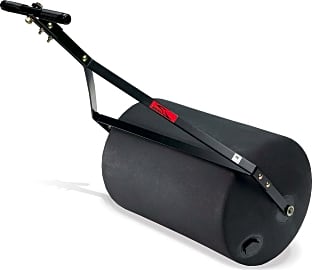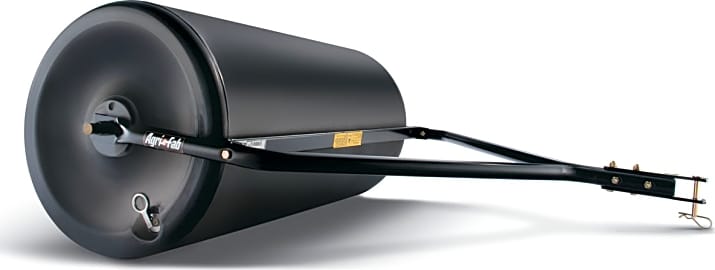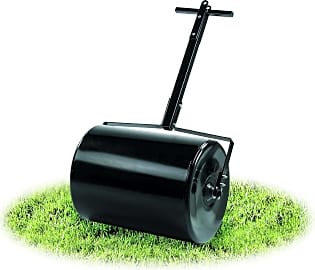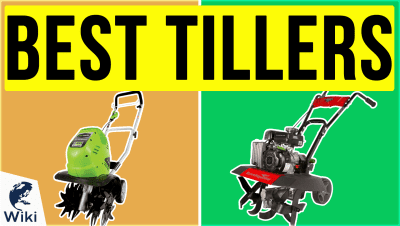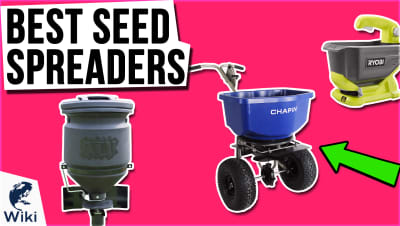The 6 Best Lawn Rollers

This wiki has been updated 42 times since it was first published in January of 2016. Planning on installing a putting green? Or do you just like the appearance of an ultra-flat surface? Then look no further than our compilation of recommended lawn rollers, which includes steel and plastic varieties. Whether you have a large or small yard, are laying new sod, or are preparing the ground for future landscaping, we have found the perfect model for you. When users buy our independently chosen editorial recommendations, we may earn commissions to help fund the Wiki.
Editor's Notes
August 22, 2019:
In truth, there isn't much to analyze when it comes to lawn rollers. After ensuring they are made with quality components, which all of these are, the only other factors to consider are size, material, and how you move it.
You may notice that nearly every model on our list is plastic. This is because we feel they offer better value than their steel counterparts. They are generally cheaper, completely impervious to rust, require less maintenance, and are known to work equally as well. That being said, we do realize that some people simply prefer to use a traditional metal unit, which is we included the Ohio Steel 4T.
When it comes to the plastic models, we wanted to make sure there were options for smaller yards, like the affordable, 24-inch wide Brinly PRC-24BH and Agri-Fab 45-0267, as well as those for large properties, like the 48-inch long Agri-Fab 45-0269.
Be aware though, it isn't just the size of the property that should be the determining factor on which roller to use. Often, the weight of your roller will be dictated by the application. If you are looking to firm up the surface of your yard, heavier models are better. However, if you simply want to push grass seed into the soil, you should use a lighter option. Luckily, with every model on our list, you can add as much or as little water or sand as needed to achieve your desired weight.
Special Honors
Husqvarna 48-Inch Steel Lawn Roller With an impressive 950-pound weight when fully loaded, there are few surfaces this model can't flatten or compact. Be aware though, that even when empty it still weighs close to 200 pounds, so it can be a bit of a headache to store or drag out to attach to your tractor. It features a tethered drain plug, has a durable powder-coated finish, and is crafted from heavy-duty 13-gauge steel. husqvarna.com
Ohio Steel Industries 60T Suitable for use on golf courses and other commercial landscapes, this 60-inch roller is definitely not for the average home user. Its drum is slightly rounded on the edges, which makes for gentler turns, and it comes with a hitch pin for attaching to your tractor, ATV, or UTV. ohiosteel.com
When To Roll A Lawn
They are intended to firm or to smoothe the top few inches of soil.
Rolling a lawn can have many benefits, provided you know how, when, and what type of lawn or soil should be rolled. Despite common beliefs, rolling a lawn is not always helpful. There are many scenarios in which doing so can actually cause damage or hinder root growth. For example, if you have clay soil, rolling will cause unwanted compaction that can takes years to undo. Rolling a lawn won't do anything to smooth out uneven patches, either. So, if that is your intent, don't buy a lawn roller. They are intended to firm or to smoothe the top few inches of soil.
If you plan on seeding a new lawn, a roller can be an invaluable tool. Before you start to lay your seed, you should use a roller to smooth out the soil. This helps to ensure your seed spreads evenly, with less clumping. After seeding, it is beneficial to run a light roller over the area to set the seeds in place. Rolling is also useful when laying new sod. After you have laid the sod, running a roller over it will eliminate excessive air pockets and promote root implantation. However, you should never use a heavy roller on new seed or sod. Rolling your established lawn before mowing can help you get a more even cut, as well. It is a great way to get a professionally manicured look, without actually having to pay the professionals.
Rolling is also beneficial to newly seeded flower beds that have loose soil or that don't get regular watering. Overly loose, dry soil is not conducive to seed germination or seedling development. Slightly compacting the soil gives the plants a better chance at thriving.
In cold weather climates, lawn rollers can be used to minimize desiccation at the end of winter and the beginning of spring. Pressing frost-heaved plants back down into the soil can prevent their root structure from continuing to dry out. It may also motivate quicker root implantation. Fall-seeded lawns and sparse turf areas often need early spring rolling as they generally experience the most frost-heaving.
How To Properly Roll A Lawn
Now that you have a firm understanding of the correct times to roll a lawn, it's time to learn how to properly roll a lawn. Generally speaking, you should roll a lawn when the soil is dry, though there is one scenario where rolling slightly damp soil is essential to healthy grass growth.
When laying new sod, you should start by removing an preexisting vegetation and then leveling your soil. Despite what many believe, lawn rollers will not help level a lawn. The only way to do this is to remove or add layers of soil. A lawn roller can help you identify uneven patches of ground, however. Simply level the soil as best you can, then run your roller over it to check for lumps.
Planting and rolling new seed follows much the same process, with just a few key differences.
After you have leveled your lawn and removed any existing vegetation or debris, it is time to till the soil with fertilizer. Next, go over the dirt a couple of times with the roller to compact the soil. Do this until the soil is smooth and your feet no longer sink into when you walk on it, then lay the sod. After laying the sod, water the grass just enough to dampen it a bit. Water is essential for sod roots to establish themselves quickly. Make sure not to flood the area, as excess water can actually be detrimental to new root growth and cause root rot. Finally, make one or two passes over the new sod with a light roller to press the roots into the ground.
Planting and rolling new seed follows much the same process, with just a few key differences. As with sodding, remove any extraneous vegetation and debris and level the area. Then, roll the ground to smooth out the soil. Next, spread your seed with a seed spreader. After spreading your seed, roll the soil one more time, before watering it. Watering newly seeded soil before rolling can cause too much compaction, making it difficult for new seedlings to take root. After rolling, water the area enough to dampen the soil, but not enough to flood the area, which can cause seeds to get washed away.
Choosing The Right Type Of Grass For Your Climate And Conditions
No matter how well you care for your lawn, if you don't plant the proper type of grass seed for your climate and growing conditions, it will never thrive. The first step is to determine which zone you live in: cool season, warm season, or the transition zone.
After determining your zone and identifying which varieties of grass grow best in that zone, you need to take the conditions of your lawn into account.
After determining your zone and identifying which varieties of grass grow best in that zone, you need to take the conditions of your lawn into account. Each grass variety grows best in certain applications. For example, Buffalo grass and Bahia grass are both warm season grasses, but each thrives in different growing conditions. Buffalo grass can withstand near freezing temperatures for short periods of time, making it better suited to northern regions within the warm season zone. It can also withstand extended periods of drought. Bahia grass does extremely well in full sun areas and has little problem adapting to sandy or acidic soil. Unlike Buffalo grass, it doesn't handle cold temperatures very well and needs regular watering.
In addition to climate and water availability, soil pH plays a major role in how well certain grasses grow. Test your soil's pH to find out if your soil is more acidic or more alkaline and make sure to buy a grass variety that adapts well to that type of soil. Other considerations should be how much maintenance you want to put into your lawn and how much traffic it will encounter. After looking at all of these factors, you will be in a better position to choose the correct type of grass for your needs.


